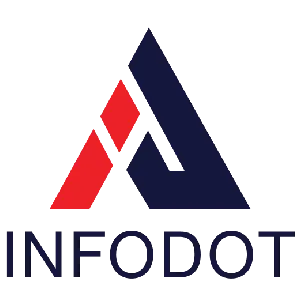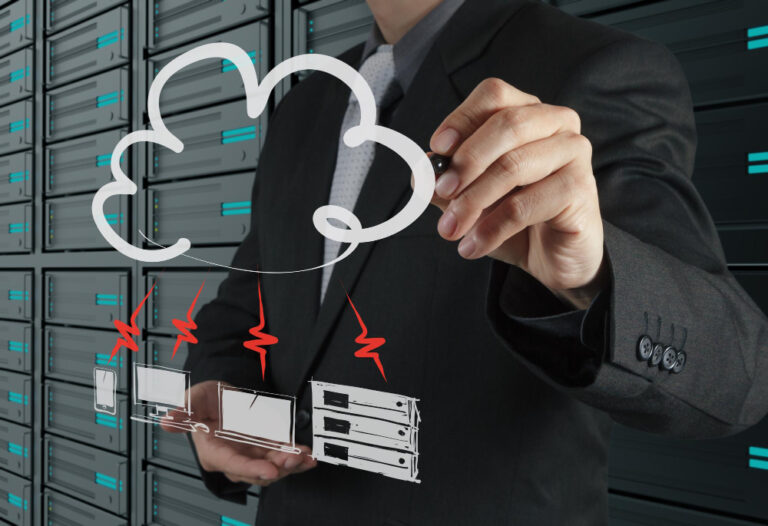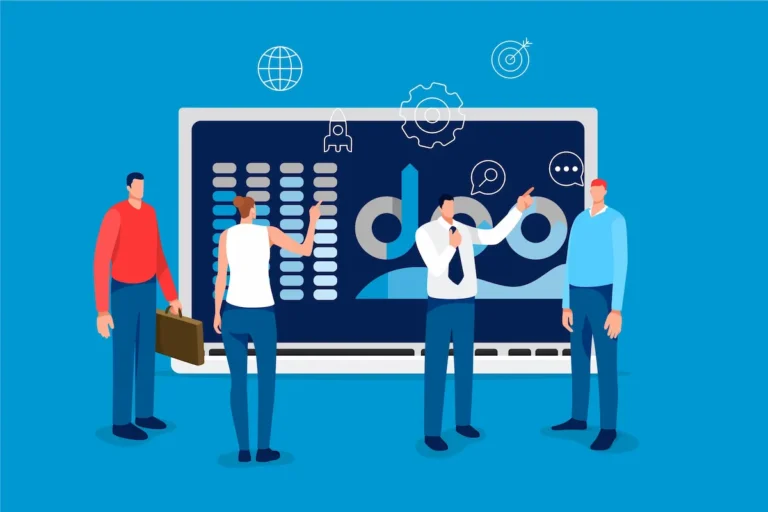Introduction
In today’s competitive startup environment, hiring bright talent is vital, and delays in onboarding can significantly impact productivity and morale. Imagine a new engineer or marketer receiving a laptop, email login, and tool access within hours of accepting an offer—not days. That swift momentum fosters engagement, invests in their success, and boosts retention from Day One.
However, delivering a complete IT workstation—including hardware, software, credentials, and training—within a single business day requires orchestration, planning, and automation. Without it, teams waste precious hours troubleshooting basics like VPN access or chat permissions, hindering progress and inadvertently increasing turnover risk.
This article breaks down how startups and IT teams can streamline full-stack onboarding to under 24 hours. We’ll explore process frameworks, real-world insights, tool recommendations, and Infodot’s proven approach to enable seamless employee ramp-up that strengthens your startup’s growth and culture.
What Is the Employee Onboarding Process?
Employee onboarding is the journey from acceptance to full integration—when new hires become productive team members. It includes completing HR paperwork, provisioning equipment, granting system access, training, and cultural orientation.
- Aligns people, tech, and policies in one timeline
- Cross-department collaboration: HR, IT, and managers
- Covers compliance, security, and system access
- Built to maximize first-day productivity
- Strengthens employer brand and commitment
- Coordinates communication and oversight
Key Stages of the Employee Onboarding Process
Onboarding unfolds across defined stages—each requiring planning and precision to meet the 24-hour goal.
- Pre-boarding: HR sends offer, paperwork, and welcome materials
- Hardware Preparation: IT selects laptop, configures OS, installs base software
- Account Provisioning: Creating email and chat credentials
- Access Permissions: Assigning drives, VPN, SaaS tools
- Training & Orientation: Schedule walkthroughs and introductions
- First-Day Task Kickoff: Set expectations and check access
- Follow-Up Support: Offer help desk for adjustments
Communicate clearly with new hire
Ensure IT and HR collaboration
Automate repeated tasks
Provide checklist to hiring manager
Define measurable onboarding goals
Review and improve each stage
How Long Should Employee Onboarding Take?
Best-in-class startups aim for under 24 hours from hire acceptance to full workstation readiness. Typical examples:
- Standard timeline: 3 to 5 business days
- Lean remote teams: often take up to 2 weeks
- High-performing teams (like Infodot): complete setup in under 24 hours
Faster onboarding delivers operational output faster, strengthens employee confidence, and accelerates ROI. The key is moving away from manual dependencies toward curated, automated templates that scale as you grow.
9 Steps for Creating a Great Employee Onboarding Process
- Centralize goal-setting
- Template-based provisioning
- Automated scripts
- Scheduled time blocks
- Cross-functional coordination
- Documentation hub
- Buddy system
- Audit trail
- Feedback loop
Define role templates centrally
Automate account and device provisioning
Schedule hardware delivery window
Ensure identity and access management
Provide video/self-paced training
Conduct onboarding feedback surveys
Employee Onboarding Template Pack
An onboarding template pack offers standardized documents and processes that instill consistency across every hire:
- Offer welcome email with links and instructions
- Pre-populated checklist in project tools
- Role-based software bundles
- Account creation forms in ITSM system
- Intro guides for systems
- 30-60-90 day expectations outline
- Access protocol and security handbook
- Manager transition email templates
These templates reduce task friction, ensure nothing slips through, and help replicable 24-hour onboarding execution.
5 Best Practices for Effective Onboarding
- Documentation first
- Automated workflows
- Training baked in
- Feedback loops
- Security policy reminders
Align IT and HR systems
Standardize role mappings
Use device imaging for setup
Provide IT help desk chats
Monitor performance and fix issues
Benefits of an Effective New Employee Onboarding Process
- Accelerates productivity
- Reduces turnover
- Enhances compliance
- Improves reviewer experience
- Supports employer brand
- Faster ramp-up time
- Reduced onboarding support tickets
- Higher early employee satisfaction
- Lower compliance breach risk
- Confidence from all stakeholders
5 Best Software Tools for Onboarding New Employees
- ITSM/Help desk
- MDM solutions
- Identity management
- MDM/hardware provisioning
- Onboarding learning platforms
- ITSM: centralize onboarding tasks
- MDM: ensure laptop compliance
- IAM with AD/Google sync
- Package management scripts
- Automated doc delivery
A Good Employee Onboarding Process Flow
- Hire accepted and paperwork complete
- Role template triggers account creation
- Hardware is imaged and shipped
- Credentials delivered before start date
- Setup walkthrough conducted first morning
- Manager checks and confirms access
- Ongoing support escalations handled
- Define clear stage cutoffs
- Use shared tracking dashboards
- Prompt delivery of credentials
- Verify system access by email
- Check orientation components completed
- Conduct first-week feedback
Automating Device Imaging and Enrolment
- Create a standard OS image with settings
- Use USB or cloud tools for image deployment
- Integrate MDM enrollment at staging
- Automate patch updates during setup
- Monitor compliance post enrollment
- Tag devices by owner in asset inventory
Remote Team Onboarding Best Practices
- Ship hardware early
- Schedule video-based orientation
- Onboard via role-specific training
- Provide digital buddy matching
- Use remote help desk
- Confirm home office compliance
Security During Onboarding
- Enforce MFA activation
- Encrypt local drives
- Configure VPN and firewall settings
- Limit admin privileges to role-based
- Provide security training
- Log all provisioning actions
Monitoring & Audit of Onboarding Workflows
- Dashboard tracking for task completion
- Automate escalation for delays
- Generate audit reports on provisioning
- Analyze delays or errors
- Survey manager and user satisfaction
- Review for continuous process improvement
Scaling Onboarding as the Team Grows
- Centralize process ownership
- Segment flows by department
- Use templated playbooks per role
- Regularly evaluate cycle time
- Shift to self-service provisioning
- Build reserve hardware stock
How Infodot Can Help with IT Onboarding
Infodot offers an end-to-end IT onboarding solution tailored for rapid growth:
- Create role-based setup templates
- Automate device imaging and IAM provisioning
- Coordinate hardware logistics
- Schedule vendor and manager check-ins
- Provide 24/7 endpoint support
- Generate compliance-ready onboarding logs
Infodot also assists with server migration, seamless laptop allocation, and building cloud backup for data protection strategies for startups adapting to a remote work setup.
Real-World Examples
1. SaaS Startup Scales from 10 to 30 in 2 Months
Devices shipped pre-imaged; code sprint-ready within 24 hours. Admin load reduced.
2. Marketing Team Expands with Remote Roles
Role-based toolkits; campaign-ready from Day One.
3. Compliance-Driven Consultancy Expedited Onboarding
Encrypted devices, monitored access, ISO audit-ready onboarding.
How to Onboard New Employees with Full IT Setup in Under 24 Hours
To deliver full IT onboarding in under 24 hours, startups must rely on automation, planning, and strong cross-team coordination. Begin with templated role-based setup plans for software, credentials, and access. Pre-stage laptops using imaging tools and MDM enrollment for fast deployment. Incorporate automated provisioning for VPN, cloud platforms, and productivity tools.
Enable cloud backup for data protection from the outset, ensuring compliance and data recovery. For remote work setup, ship preconfigured devices ahead of time and provide digital orientation. Include audit trails, documentation access, and a dedicated IT support touchpoint. Finally, maintain device tagging and inventory for seamless tracking. This proactive, process-driven approach enables consistent, secure, and fast onboarding—helping new hires contribute immediately.
Conclusion
Creating a full IT setup for new employees in under 24 hours isn’t just possible—it’s critical for agile startups. With clearly defined workflows, automation tools, and templated policies, you turn onboarding from a bottleneck into a competitive advantage.
When every new hire receives the hardware, access, security configuration, and onboarding materials the same day they start, it sends a powerful message: “You are valued, and we are ready for you.” That energy translates into speed, culture, and momentum.
Infodot partners with growing teams to build plug-and-play onboarding systems—shortening cycle time, improving security, and fueling growth without friction. Ready to accelerate your hiring engine and build a future-ready workforce? The clock starts now.
FAQs
- What is the onboarding process for a new employee?
A structured flow covering paperwork, device setup, access provisioning, training, and feedback to integrate hires efficiently. - What is the IT onboarding policy?
A documented policy outlining timelines, roles, security requirements, and responsibilities involved in setting up IT for new hires. - How long should IT take to onboard a new employee?
Best-in-class teams complete full IT setup—including devices and access—within 24 hours of acceptance. - How do you manage onboarding process new hires?
Use workflows in HR and IT systems, assign roles, automate tasks, and track via dashboards for transparency. - What are 4 C’s for onboarding?
Compliance, Clarification, Culture, and Connection—focus areas ensuring completeness and engagement. - Should new hires get devices before Day 1?
Yes, shipping hardware in advance ensures setup is complete before the first workday starts. - What tools automate onboarding?
Use ITSM systems, MDM platforms, scripting tools like PowerShell, and identity management integration to build workflows. - Is remote onboarding different?
Remote onboarding requires early device delivery, video orientation, virtual training, and digital buddies for support. - What data security should be included?
Devices must be encrypted, joined to MDM, configured with VPN, firewalls, MFA, and endpoint protection. - Should onboarding content be standardized?
Yes—standard templates ensure consistency in permissions, software bundles, and compliance across hires. - How track completion of onboarding?
Use dashboards and automated reminders in ITSM to monitor visibility and escalate delays. - Do managers need onboarding training?
Absolutely—they should understand timelines, their role in acceptance checks, and feedback mechanisms. - What hardware provisions are best?
Choose device standards per role and keep hardware imaged with gold master before shipping. - How handle re-onboarding returning employees?
Apply role templates plus re-provisioning scripts to provide new access quickly and securely. - What about software license limits?
Use role-based license bundles and expiration scripts to avoid oversubscription. - How is access revoked when employee leaves?
Revoke accounts via IAM scripts; wipe or reassign hardware through MDM on exit. - How often audit accounts after onboarding?
Conduct quarterly audits to verify access matches current role requirements. - How involve HR in onboarding?
HR triggers the IT workflow after paperwork completion and coordinates manager introductions. - What’s a buddy system?
Assign an experienced peer who welcomes the new hire, guiding them through first-week tasks. - Should onboarding be remote-first?
Yes—setup processes can be remote-enabled so employees anywhere receive equal access and experience. - Are IT setups customized?
Yes—role-based templates specify necessary tools and configurations per position type. - How much does rapid onboarding cost?
Costs relate to automation tools and MDM licensing—but ROI is high through improved retention. - Can startups scale this system?
Absolutely—the process scales with role templates and centralized automation as you headcount increases. - What if onboarding misses something?
Schedule a follow-up review 24–48 hours after start to catch and address any gaps. - How engage new hires with IT process?
Communicate schedule of setup, send welcome docs and schedule live check-in on Day One. - Is onboarding iterative?
Yes—feedback must be collected and flow improved continuously based on new hire responses. - How long training last after setup?
Initial training is typically a few hours on Day One; deeper training follows in subsequent weeks. - What tech supports self-service help?
Knowledge base, chatbots, and help desk systems—enable immediate access to instructions and troubleshooting. - How proof of compliance handled?
Maintain audit logs of setup steps, MFA activation, device enrollment, and training completion. - Can Infodot manage onboarding ongoing?
Yes—Infodot offers turnkey managed onboarding, from planning to device delivery and ongoing help desk support.




